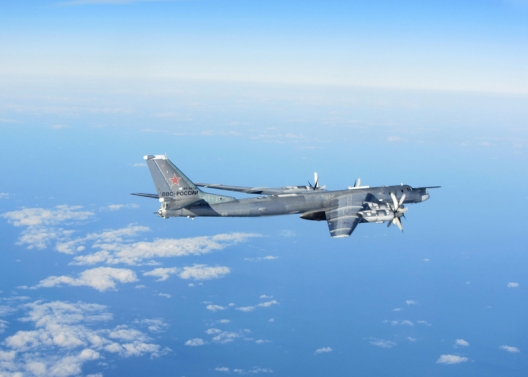 In a single 24-hour period this week, Russia dispatched 19 combat aircraft — including “Bear” strategic bombers — to probe North Atlantic Treaty Organization air defenses. It also test-launched a ballistic missile in the Barents Sea, north of Sweden, that hit a target in Kamchatka in Russia’s Far East.
In a single 24-hour period this week, Russia dispatched 19 combat aircraft — including “Bear” strategic bombers — to probe North Atlantic Treaty Organization air defenses. It also test-launched a ballistic missile in the Barents Sea, north of Sweden, that hit a target in Kamchatka in Russia’s Far East.
The flurry of activity recalls the bad old days of the Cold War; NATO has had to scramble to intercept Russian jets more than 100 times this year, three times more often than in all of 2013. So what exactly are President Vladimir Putin and his generals trying to achieve? They aren’t saying, but they appear to have multiple goals, all related:
* To remind Europe as a whole (four strategic bombers circled the continent to reach Portugal) that Russia is a major nuclear power willing to use force;
* To remind Finland and Sweden in particular (a group of seven Russian jets forced NATO planes to scramble over the Baltic Sea twice) of the weakness of their defenses, and warn those two countries against trying to join NATO or defend the Baltic States;
* To show the U.S. that opposing Russian encroachments in Ukraine or any other post-Soviet state wouldn’t be worth the risk;
* To test NATO defenses and, as part of a major military upgrade, get real world training and flight hours after years of decline. . . .
For Putin and for most Russians, the borders created by the Soviet Union’s collapse in 1991 aren’t a given. The new states that emerged include many ethnic Russians and, seen from Moscow, don’t look like real countries — they’re ex-republics that have been in transition for 20 years, their final characteristics remaining to be determined.
Image: A Russian Tu-95 Bear H strategic bomber, October 29, 2014 (photo: UK Ministry of Defense)

